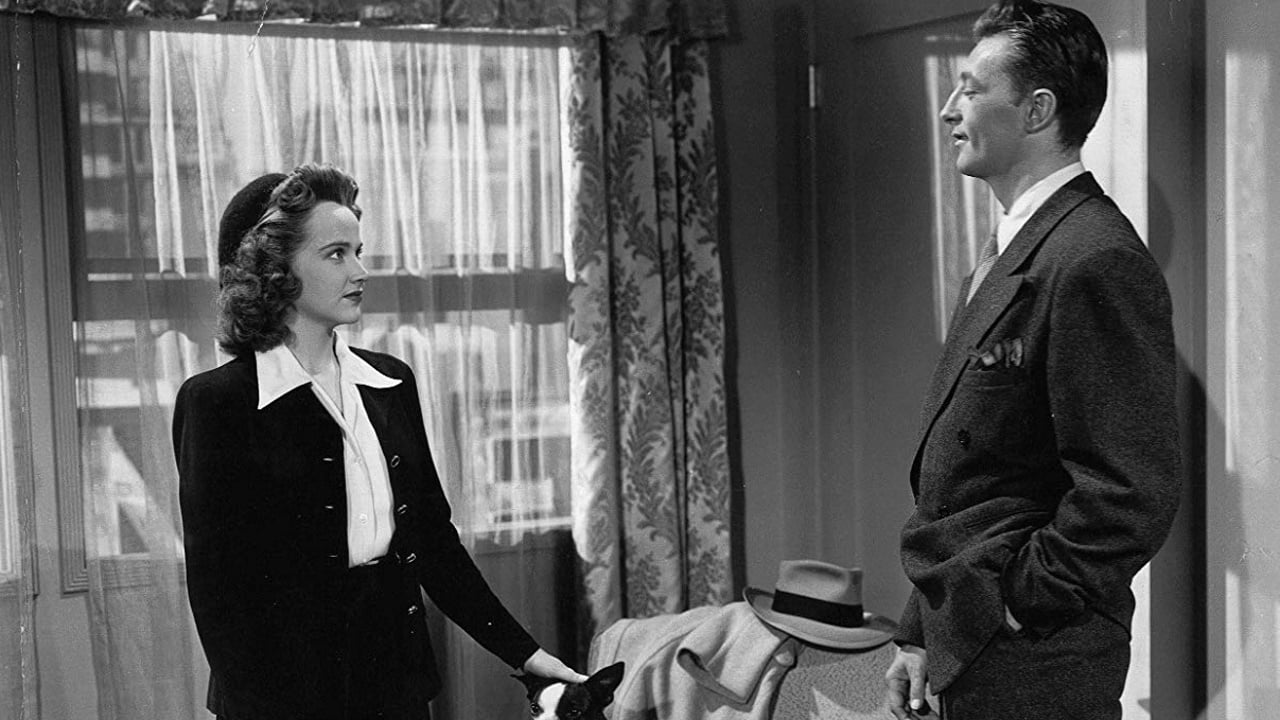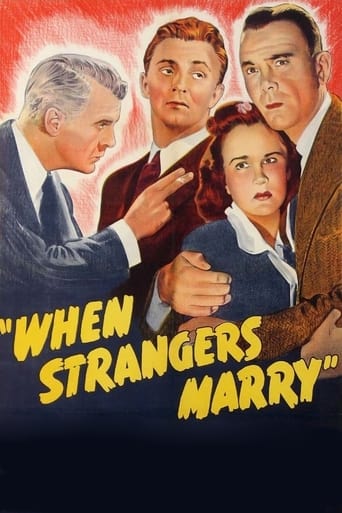

WHEN STRANGERS MARRY (aka Betrayed) 1944. Even most film fans know William Castle only for his gimmicky 50s & 60s horror films like THE TINGLER. But, Castle cut his teeth with several crime and mystery films which often bordered on Noir such as early entries in The Whistler series. STRANGERS is very much a B movie with all the usual shortcuts (montages, stock footage and scenes that can be only seconds in length). It's an efficient enough little thriller with a stellar cast including Kim Hunter, Dean Jagger, Neil Hamilton (as another cop) and the great Robert Mitchum. Much of your enjoyment will depend on how you take the twist towards the end, but, it moves along at a brisk 67 minutes and has enough to pass the time.
... View More"House on Haunted Hill" director William Castle's murder & mystery "Where Strangers Marry" is a good crime thriller with a great surprise reversal in the final moments. By now, everybody knows that Castle cribbed from Hitchcock's "The 39 Steps" when the maid took the mask off the dead man and the editor cuts to a train with a screaming whistle. All I can say is that it works for Castle as well as it worked for Hitchcock. Performances are above-average in this hypnotic tale of deception with Dean Jagger cast as a shady salesman who has just gotten himself hitched to sweet, innocent heroine Kim Hunter. When our heroine suspects that her husband, Paul Baxter (Dean Jagger of "Bad Day at Black Rock") may be a notorious 'silk stocking' slayer, she runs to another salesman, Fred Graham (Robert Mitchum of "The Night of the Hunter") for advice. Paul fails to show up at a hotel in New York City, so Fred takes her to see a homicide detective, Lieutenant Blake (Neil Hamilton of TV's "Batman), where he played Commissioner Gordon of Gotham City. Throughout "When Strangers Marry," Jagger casts a crooked shadow. He is downright anti-social. Furthermore, he lies to his newly wed bride and she catches him in a lie. Neither Castle nor his scenarists, Oscar-winner Philip Yordan for "Broken Lance" and Dennis J. Cooper of "Fear," working for a story by George G. Moskov of "Green Fields," telegraph the revelation during the closing moments. Everything about "When Strangers Marry" is polished. Clocking in at a nimble 67 minutes, Castle never loiters, and the last minute train scene hearkens back to an earlier one.
... View MoreThere is a ridiculous amount of mood and tension over opening envelopes, finding notes slipped under a door, montages, shadowy doorways and streets, phones and doorbells ringing, et cetera. Mitchum and Hunter do well in spite of their material where Hunter marries a man she only met three times (Jagger) and Michum is the man she turned down, which makes it kind of senseless that Hunter and Mitchum are always such close friends where he even wants to volunteer to find the missing husband (being turned down, wouldn't he hope a divorce results if the husband doesn't come back?) and help locate the silk stocking strangler. Of course toward the end you might guess who the strangler really is before you find out. This premise is interesting, but suspense is built too often in montages, fantasies, and moody music instead of through the story and characters.
... View MoreSome important names were getting good exposure for their talents in When Strangers Marry. In front of the camera were Kim Hunter and Robert Mitchum. And behind are director William Castle later famous for horror pictures and Dimitri Tiomkin whose music scores were usually in films with far bigger budgets and vistas than When Strangers Marry.Young Kim Hunter arrives in New York where she's on impulse married salesman Dean Jagger on short acquaintance. He's been delayed in Philadelphia and tells her to go to his flat and set up housekeeping. A helpful friend in Robert Mitchum proves even more helpful when Jagger is delayed for quite some time.Good reason he has been delayed. The opening shows the homicide of a drunk and flannel mouth Dick Elliott who was bragging about the $10,000.00 he had even dropping large bills on the barroom floor. The next thing we see is the hotel maid finding the body and the cops Philly have a lead the suspect has gone to New York.Where Neil Hamilton of the NYPD takes over and Jagger looks good for it to a disbelieving Hunter.Not the greatest of noir films. But When Strangers Marry gave Robert Mitchum his first taste of a genre where at RKO he would get some really great roles and become a mega-star. Hunter and Jagger do well in their parts. For a look at some movie legends developing I would give When Strangers Marry a viewing.
... View More